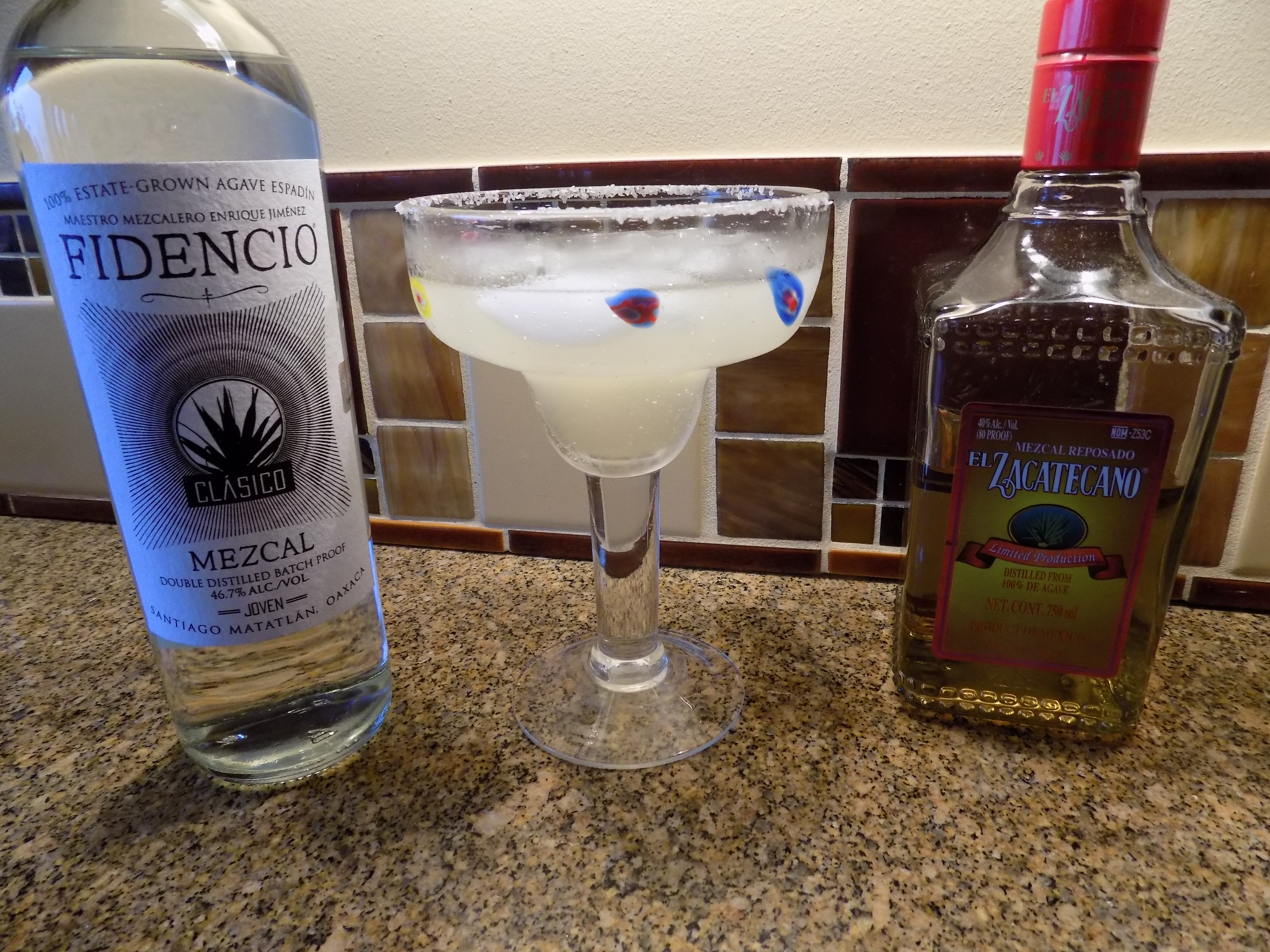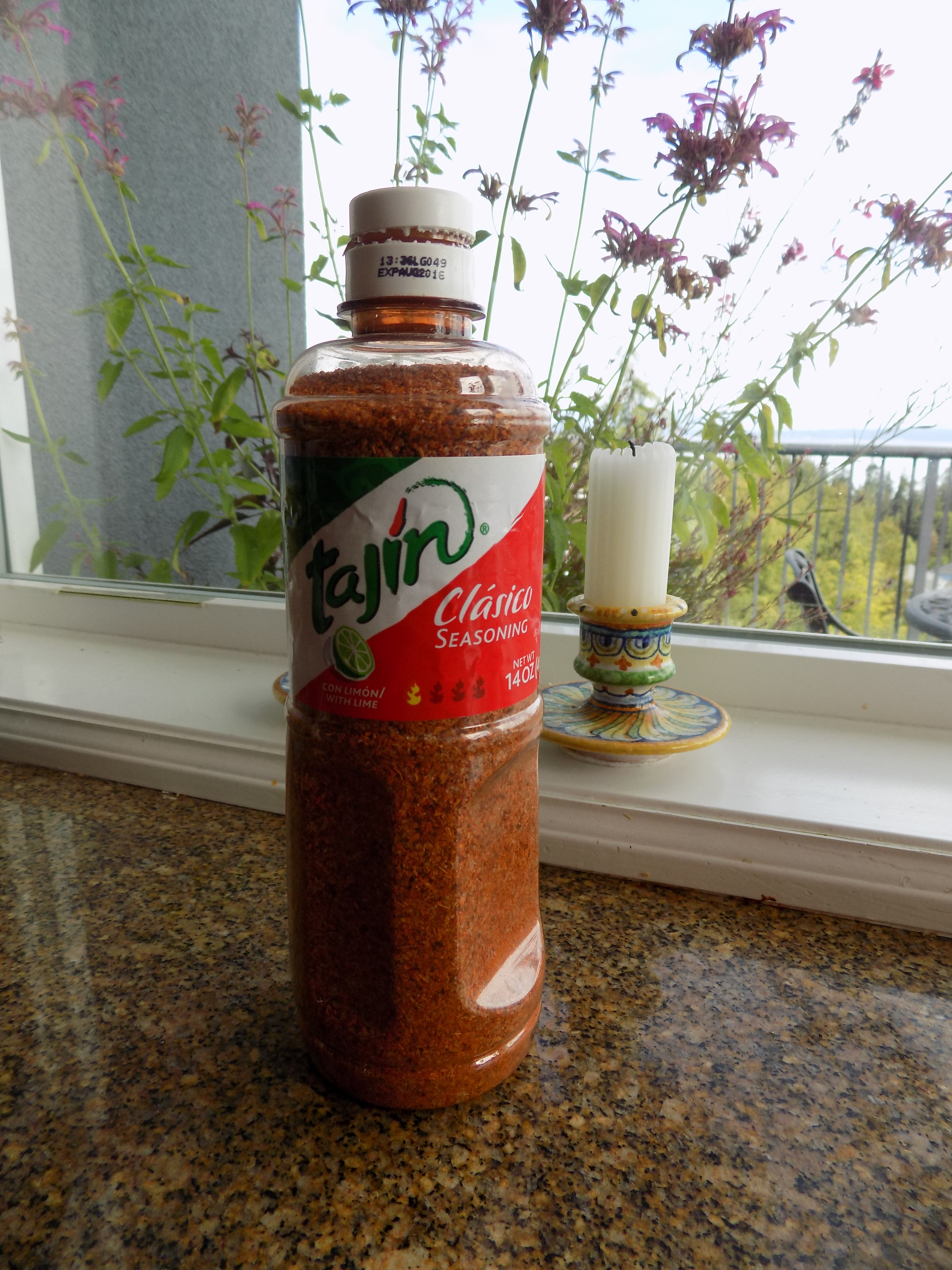Well, true to my word, here comes another fabulous cocktail recipe. (And no, we don’t spend all of our time drinking amazing adult beverages, but we do usually have an early evening drink while I cook dinner and we discuss the days’ events.) This drink has become one of our favorites.
For those who haven’t had the pleasure of tasting mezcal, but possess both an inquiring mind and a wish to obtain mezcal enlightenment, read all about this amazing product at the end of this post.
Now as the name implies, this drink is called a Margarita for good reason. Basically this is our favorite recipe for a tequila Margarita simply substituting mescal for tequila. Ta Da – that’s it! The difference? Mezcal has a light to moderate smoky flavor that is not found in tequila. The difference is delightful, especially if you happen to love alcohols like Scotch with their inherent smoky flavor. Of course, mezcal doesn’t incorporate that nasty peaty flavor associated with Scotland’s finest. (I don’t care for Scotch. Can you tell?) Mezcal simply exudes a rich smoky essence that is quite appealing.
So next time you are at your favorite liquor emporium, pick up a bottle, especially if you are a Margarita fan. I’m sure you will love this new spin on a classic Margarita as much as we do.
- 2 parts Mezcal (we use the El Zacatecano Reposado Mezcal for this drink)
- 1 part Cointreau (orange flavored liqueur)
- 1 part fresh lime juice
- ice
- coarse salt (kosher works fine)
- Tajin Clásico Seasoning*, opt.
Combine the mezcal, Cointreau, lime juice, and ice in a martini shaker. Shake well and pour the liquid and a few of the ice cubes into prepared glasses. Garnish with a thin wedge of lime.
To prepare the glasses, rub the rims with lime and dip into coarse salt combined with a pinch or two of Tajin Clásico Seasoning.
Chilled glasses are always wonderful. If you have the time, and presence of mind to chill your glasses ahead of time, you’re doing better than we are! But I highly recommend chilled glasses for the best presentation and mouth feel.
We enjoy the following two brands of Mezcal:
For mixed drinks – El Zacatecano Reposado Mezcal – Made in Mexico’s Sierra Madre Occidental Mountains, this 100% agave-based spirit is elegant and powerful, with herbal notes of rosemary and mint, along with cooked agave and green olives. It won a Silver medal at the 2012 San Francisco World Spirits Competition. Its appearance is golden, with yellow straw highlights. Its distinguished elegant style, with notes of vanilla, caramel, and almonds, come from time spent in white oak casks. The powerful and intense palate has herbs and spices, while the finish shows cooked agave, anise, and subtle remnants of white oak. Information Source – Crafts Spirits Exchange
For sipping – Fidencio Clásico Mezcal Joven – Made from 100% agave and double distilled. Earthy and slightly fruity on the palate, with mineral, smoke, and dried herbs, with a consistent fruit and agave undertone. Information Source – kegnbottle.com
*Tajin Clásico Seasoning – a delicious blend of ground chili peppers, sea salt, and dehydrated lime juice
Mezcal: The following information is from an article on examiner.com (now discontinued) with a little editing by yours truly.
“Mezcal (traditionally spelled mescal) is a Mexican distilled spirit that is made from the agave plant. Tequila is technically a mezcal, however, there are differences in production technique and in the types of agave used. Tequila is made from a single type of agave plant – the agave Tequilana (blue agave) – and can only be produced in the Mexican state of Jalisco and in small parts of four other Mexican states.
Mezcal can be produced from up to 28 varieties of agave (including blue agave) and is made around the city of Oaxaca and, according to official government regulations (NOM -070-SCFI-1994), can also officially be produced in some areas of the states of Guerrero, Durango, San Luis Potosi and Zacatecas. Most mezcals are made from the Espadin agave, although some mezcal producers blend agave varieties to create a distinct flavor.
Mezcal traditionally has a very unique, smoky flavor that makes it fairly easy to distinguish from tequila. It also tends to taste sweeter, or richer, than tequila. Some mezcal producers have adopted production processes similar to tequila, and the resulting mezcal has flavor profile similar to tequila.
Traditional Production Methods:
When tequila is made, the agave head is baked in an above-ground oven. This began in the late 19th century. Mezcal producers, however, often follow the traditional method of using in-ground pits. The agave heads (also called agave hearts, or piñas) are roasted or grilled over hot rocks in a cone-shaped pit (called palenques or hornos). A fire is started and burns for about 24 hours to heat the stones that line the pit. The agave heads are put into the pit and then covered with moist agave fiber that is left over from the fermentation process. A layer of agave leaves or woven palm leaves cover the fibers and the agave heads are left to cook for two to three days.
Types of Mezcal:
Mexican government regulates mezcal, defining various types and aging categories in a manner similar to tequila. The regulations split mezcal into two categories:
Type 1: 100% agave (using any or all permitted agave plants)
Type 2: Minimum 80% agave and maximum 20% other sugars.
There are three aging categories:
Abacado (also called joven or blanco): clear, un-aged mezcal that results from the distillation process. It is often bottled immediately, but flavoring or coloring agents can be added.
Reposado (also called madurado): aged in wood barrels for two to eleven months.
Añejo: aged in wood barrels for a minimum of twelve months.
(The regulations also forbid mezcal producers to make tequila, and tequila producers cannot produce mezcal.)
Mezcal is widely known for the agave “worm” (or gusano) that floats toward the bottom of the bottle. It is primarily a marketing gimmick to help boost sales, especially in the United States and in Asia. In fact, it is not a “worm” at all, but one of two insect larvae (a caterpillar of a night butterfly or the larvae of the agave snout weevil) that can infest yucca and agave plants. Tequila never (ever!) has a worm in the bottle.”


